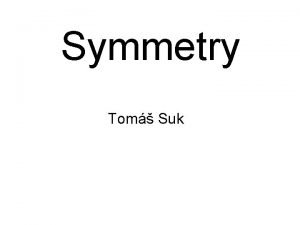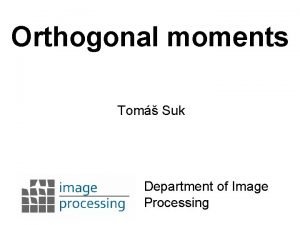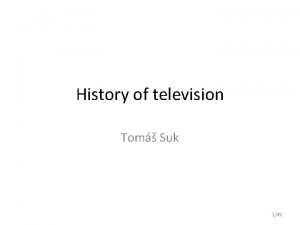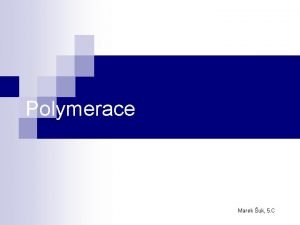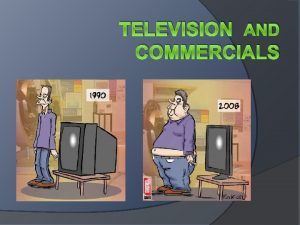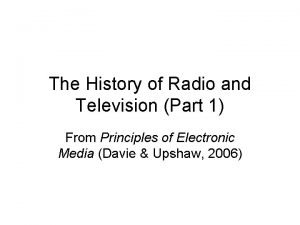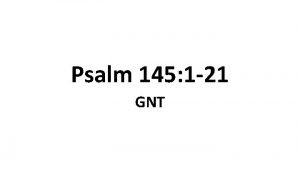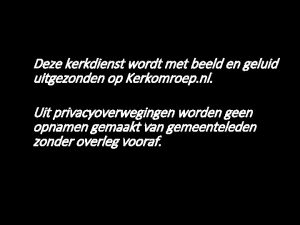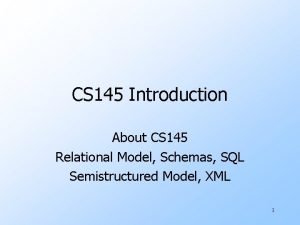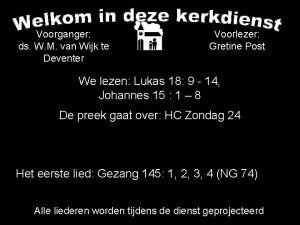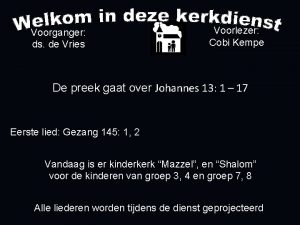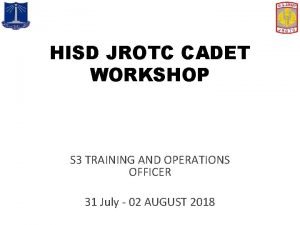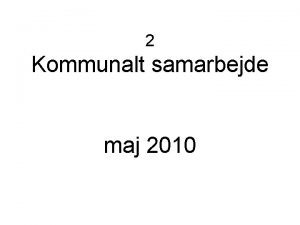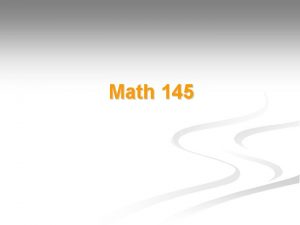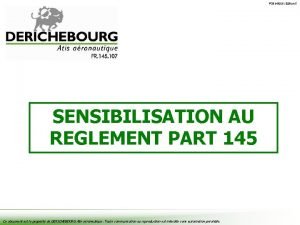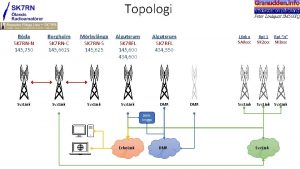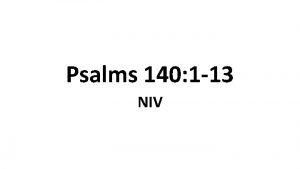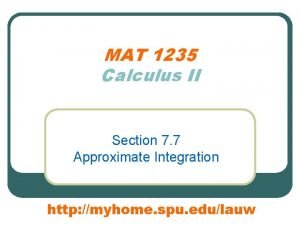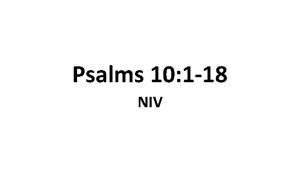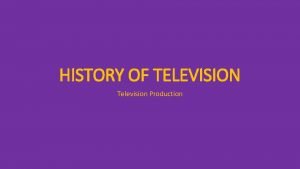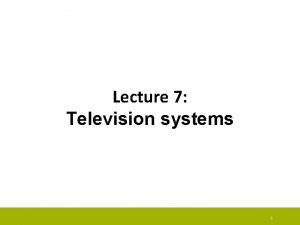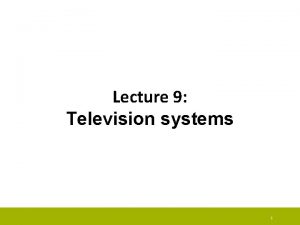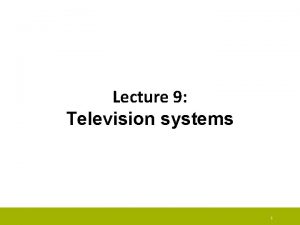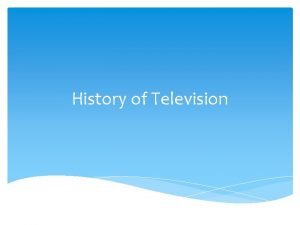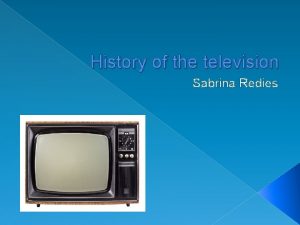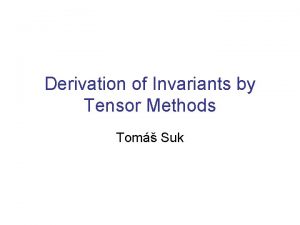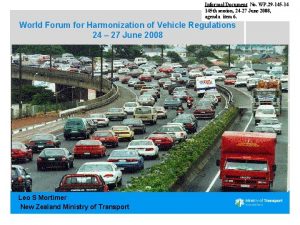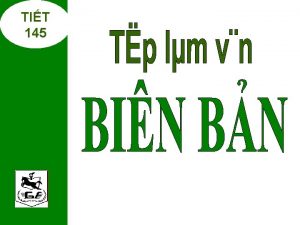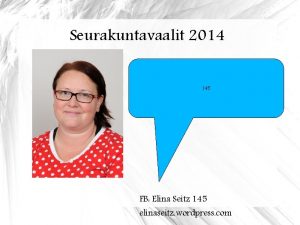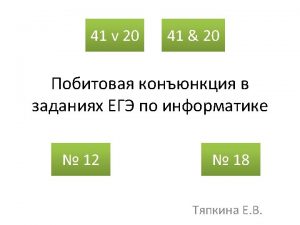History of television Tom Suk 145 History of













































- Slides: 45

History of television Tomáš Suk 1/45

History of television • Television - transmitting moving images • Joke from times of Soviet Union • Who invented television? 2/45

History of television • • Television - transmitting moving images Joke from times of Soviet Union Who invented television? Inventor of television was some Jefim Kolorovič Televizenko, who transmitted images from a gallery to his home. 3/45

History of television • Alexander Bain 1843 transmitted individual pictures – more fax than television 4/45

History of television • Johann Wilhelm Hittorf 1869 – cathode ray tube (CRT – katodová trubice) • Willoughby Smith 1873 – photoconductivity of selenium 5/45

Mechanical television • Paul Julius Gottlieb Nipkow – German technician (* 1860 Lauenburg (Lębork) – 1940 † Berlin) • Nipkow disk (Nipkowův kotouč) 1884 6/45

Mechanical television 7/45

Mechanical television While viewing mechanical television, one was literally glued to the set Felix the Cat as he looked in 60 -line pictures during a 1928 telecast by RCA-NBC 8/45

Mechanical television 9/45

Spinning disk confocal microscopy • It focuses the excitation laser through a series of many pinholes on a rapidly rotating disk to accelerate the scanning process. 10/45

Analog television • Georges Rignoux, A. Fournier, Paris 1909 – matrix of 8× 8 selenium cells • Kenjiro Takayanagi 1925 CRT displaying television signal – first receiver • Vladimir Kosmich Zworykin 1933 iconoscope – first electronic camera • November 2, 1936, BBC – first public regular TV broadcasting • May 1, 1953 – TV broadcasting in Czechoslovakia 11/45

Analog electronic camera • Iconoscope • Super-iconoscope • Separate photocathode and accumulative cathode to use secondary emission 12/45

Analog electronic camera • Orthicon • Super- orthicon 13/45

Analog electronic camera • Vidicon • Plumbicon Based on semiconductors: vidicon – one type, Plumbicon – PN junction 14/45

Black-and-white CRT (černobílá obrazovka) • Deflection coils (vychylovací cívky) • Phosphor (luminofor) - zinc cadmium sulfide and zinc sulfide silver, the Zn. S: Ag+(Zn, Cd)S: Ag 15/45

Black-and-white CRT 16/45

Standards • 30 frames/s, 525 lines per frame, line frequency 15 750 Hz, video bandwidth 5. 5 MHz • 25 frames/s, 625 lines per frame, line frequency 15 625 Hz, video bandwidth 6. 5 MHz Aspect ratio 4: 3 17/45

Interlacing (prokládané řádkování) Contrary to progressive scan (neprokládané řádkování) 18/45

Interlacing (prokládané řádkování) • Frame – two fields (half frames) • Snímek – dva půlsnímky 19/45

One-line signal ¬ Horizontal synchronization (sync separator) (řádkový synchronizační impuls) 20/45

Vertical synchronization (snímkový synchronizační impuls) 21/45

Amplitude modulation • Radio carrier wave – modulated amplitude 22/45

Amplitude modulation DK (OIRT) BG (CCIR) Audio is frequency-modulated 23/45

Color television • • • John Logie Baird 1928 – Nipkow disk, 3 spirals of apertures, color filters, 3 color light sources at the receiver, commutator 24/45

Color television • NTSC (National Television System Committee) • Luminance Y=0. 3 R+0. 59 G+0. 11 B • Chrominance I=0. 6 R-0. 28 G-0. 32 B (in-phase) Q=0. 21 R-0. 52 G+0. 31 B (quadrature) January 1, 1954 USA – first regular color broadcast 25/45

NTSC • Amplitude-phase (quadrature) modulation • 3. 579545 MHz color carrier • Two carriers, phase difference 90°, amplitude modulation of I and Q § phase = hue § amplitude = saturation 26/45

NTSC • Colorburst (synchronizační impuls barvy) • Detail of spectrum • color carrier fb America fb=227. 5 ∙ 15750 Hz=3579545 Hz Europe fb=283. 5 ∙ 15625 Hz=4429687. 5 Hz 27/45

NTSC • disturbing pattern from the chrominance signal on the black and white screen 28/45

PAL • Phase alternating line (fáze střídající se po řádcích) • Chrominance U=R-Y, V=B-Y • Even field: F=(U, V) • Odd field: F*=(U, -V) 29/45

SECAM • Séquentiel couleur à mémoire – postupný přenos barev s pamětí • Odd lines V, even lines U, the other signal from memory from the previous line • Frequency modulation 30/45

Color analog camera • Semi-transparent mirrors 31/45

Analog television receiver • Block diagram 32/45

Analog television receiver • Matrix circuit 33/45

Analog television receiver • Color CRT 34/45

Color CRT • Dot phosphor (delta gun) color CRT • Inline (or Trinitron) color CRT 35/45

Phosphor for color CRT Blue – zinc sulfide with few ppm of silver Green – zinc sulfide with copper Red – yttrium oxide-sulfide activated with europium 36/45

Present time • Camera – Charge-Coupled Device (CCD – nábojově vázaný prvek) • Digital Video Broadcasting (DVB – digitální televizní vysílání) • Screen – Liquid Crystal Display (LCD – Displej z tekutých krystalů) – Organic light-emitting diode (OLED – organické svítící diody) 37/45

Digital television • • DVB-T (Terrestrial) DVB-T 2 (Second generation terrestrial) DVB-S (Satellite) DVB-C (Cable) DVB-T 2 – in Prague from 1 st March 2017 DVB-T – last broadcast in 2021 38/45

Orthogonal frequency-division multiplexing modulation (OFDM) • A large number of closely spaced orthogonal subcarriers that are transmitted in parallel 39/45

Orthogonal frequency-division multiplexing modulation (OFDM) • Orthogonal frequencies – peaks of subcarriers line up with the nulls of the other subcarriers • Overlap of spectral energy – original signal can be recovered 40/45

Orthogonal frequency-division multiplexing modulation (OFDM) • Transmitter – inverse Fourier transformation • Receiver – Fourier transformation 41/45

Digital television • Standard codecs: o MPEG-4 AVC (H. 264) - DVB-T o MPEG-H HEVC (H. 265) - DVB-T 2 • A few digital channels in one original analog bandwidth – multiplex o DVB-T: 4 channels SD or 1 channel HD o DVB-T 2 : 16 channels SD or 4 channel HD 42/45

Difference between DVB-T and DVB-T 2 43/45

Digital television • Hybrid Broadcast Broadband Television (Hbb. TV) • Standard for connection of television and internet 44/45

History of television • Thank you for your attention 45/45
 Tetrahedron axis of rotation
Tetrahedron axis of rotation Edmond laguerre
Edmond laguerre Julius gottlieb
Julius gottlieb Tom suk
Tom suk Andrea suk
Andrea suk Hwang woo-suk
Hwang woo-suk Marek suk
Marek suk Tom tom go 910
Tom tom go 910 What does the bible symbolize in the devil and tom walker
What does the bible symbolize in the devil and tom walker History
History History of radio and television
History of radio and television Wwii show
Wwii show Psalm 145 tpt
Psalm 145 tpt Psalm 42 gnt
Psalm 42 gnt Pasal 145 kuhap
Pasal 145 kuhap Oehwg
Oehwg Examples of instincts
Examples of instincts Seeiem
Seeiem 145 iq percentile
145 iq percentile Levertal alkohol
Levertal alkohol Weerklank 189
Weerklank 189 Cs 145
Cs 145 Gezang 145
Gezang 145 Gezang 145
Gezang 145 Hisd jrotc
Hisd jrotc Ephesians 1:7-9
Ephesians 1:7-9 400 e yuvarlanan en küçük sayı
400 e yuvarlanan en küçük sayı Læ 145
Læ 145 Math 145
Math 145 Supercade-suba (2) -avenida calle 145 no.103b-90
Supercade-suba (2) -avenida calle 145 no.103b-90 Réglementation part 145
Réglementation part 145 Eee 145
Eee 145 Bda-145
Bda-145 Psalm 23 niv
Psalm 23 niv 145+10
145+10 145+(-45)=a. berapa nilai a
145+(-45)=a. berapa nilai a Hemmorate
Hemmorate How do you find the greatest common factor of two numbers
How do you find the greatest common factor of two numbers Math 145
Math 145 7.145-2.766
7.145-2.766 Psalm 145:1-21
Psalm 145:1-21 145psalm
145psalm Psalm 119 18 niv
Psalm 119 18 niv Alle augen warten auf dich gebet
Alle augen warten auf dich gebet Psalm 145 nlt
Psalm 145 nlt Organisation
Organisation
